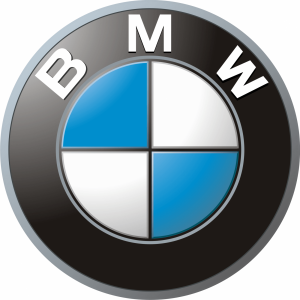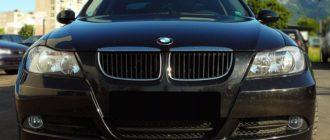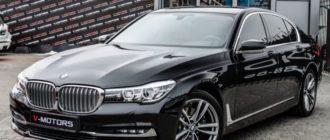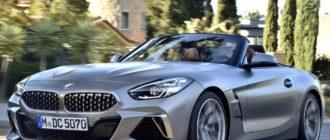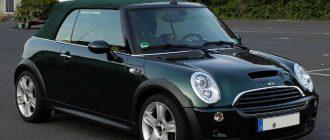- Exterior
- Bumpers
- Lighting
- Engines of BMW 5 f11
- Interiors
- Restyling of BMW 5 f11, pre-restylingThree-liter diesels are available in two trim levels.
Base models with 258 hp, consuming 5.4 liters
Luxury models with 381 hp, consuming 6.2 liters. Accelerating in 4.7 seconds.Restyling of BMW 5 f11, pre-restyling
Electronic Equipment of BMW 5 f11
The electronic equipment performs well.
Owners use:
BMW EfficientDynamics designation;
lane-keeping assist systems;
video projection screens;
surround-view cameras;
Auto Start-Stop;
brake energy regeneration.Professional navigation devices are known for their reliability. However, if malfunctions occur, a substantial sum will be required. Over time, electrical issues may arise in the cars.
Points to Consider
Brake systems have limited lifespans. Brake pads and discs wear out quickly.
Suspensions are unreliable. A couple of large potholes and their lifespan ends.
Important! Therefore, do not assume that these are off-road suspensions and always brake before significant obstacles. Or, after 50,000 km, the lower front arms and shock absorbers may need replacement. Although the latter may wear out even earlier.
The pneumatic equipment is reliable. The cars' steering wheels have electronic controls. Weak points concern the steering column shafts that become loose and cause knocking. Tie rod ends need to be replaced after 50,000 km, or even sooner on poor roads.
Mechanical gearboxes are reliable. Silent blocks wear out. Driveshaft damage occurs. All-wheel-drive cars have common issues. Front axle reducers wear out. Oil changes are necessary. If not done, bearings will produce unpleasant sounds after 100,000 km.
Engine gears are replaced separately from drives. The eight-speed Steptronic transmissions have sturdy designs, supporting up to 700 Nm of torque with adaptive gear shifts.
Trim Levels of BMW 5 f11
Cars with two-liter engines are available in four trim levels:
Basic rear-wheel-drive models. With 184 hp, acceleration of 7.9 seconds. Equipped with active cruise control, airbags, ABS. Starting at 1,899,000 rubles.
All-wheel-drive Business models with speed limit indicators. Engines similar to the next 2 trims. With 245 hp, consuming around 6.4 liters. Top speed of 250 km/h. Priced at 2,479,000 rubles. They feature speed limit indicators.
Auto M SPORT. Priced at 2,616,000 rubles. They have air intake control mechanisms.
Luxury editions priced at 2,954,000 rubles, featuring night vision displays.Three-liter engines with 306 hp. Fuel consumption of 7.6 liters. Acceleration in 5.6 seconds. Top speed of 250 km/h.
Cars with 4.4 liters, generating 450 hp, consuming 9.2 liters. Accelerating in 4.4 seconds.
Two-liter diesels with 184 hp, consuming 4.5 liters. Top speed of 231 km/h in 7.9 seconds.
Three-liter diesels are available in two trim levels.
Base models with 258 hp, consuming 5.4 liters
Restyling of BMW 5 f11, pre-restyling
Luxury models with 381 hp, consuming 6.2 liters. Accelerating in 4.7 seconds. - Restyling of BMW 5 f11, pre-restyling
Electronic Equipment of BMW 5 f11
- Points to Consider
- Trim Levels of BMW 5 f11
- Restyling of BMW 5 f11, pre-restyling
Various opinions exist about BMW. Some believe that these cars come with expensive maintenance and have their own service life. Others appreciate the prestige, speed, and technical characteristics. Today, we will talk about the BMW 5 F11, which combines both aspects.
Until 2013, Mercedes-Benz was considered the main competitor of these cars. Now, the competition has almost disappeared. On Russian roads, BMW 5 F11 perform well with their new series of engines and automatic transmissions.
However, it should be noted that after 5 years of use, the maintenance costs increase due to complex constructions. Some cars show wear after 60 — 70 thousand kilometers. In general, it all depends on how the cars are used.
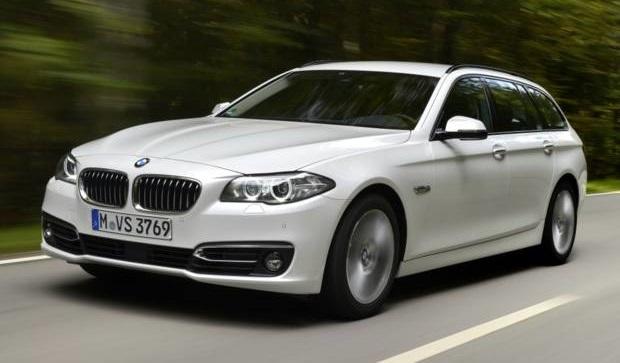
Exterior
The bodies of these cars are of high quality. They come with xenon lighting. The developers have made every effort to eliminate the risks associated with rust formation. Therefore, even after accidents, it is not very noticeable.
The front parts of the cars are made of plastic and aluminum. The suspensions also have aluminum cups. Only non-essential parts are made of plastic. The doors are also made of aluminum.
The cars have glass sunroofs with electric drives. The bodies have steel parts with protection in the form of quality paint coatings.
For vulnerable areas, there are plastic protections on the outside and foam protection on the inside. In dangerous areas, such as drains in the rear doors where moisture remains and seals deteriorate, regular checks are also necessary.
Important! Check these points and apply additional layers of sealant to these areas. Water can also get under the drains, leading to issues under the windshields.
The steel longitudinal members in the front parts will not come off completely. However, since the decision was made to increase the number of seams, drivers need to pay attention to the seams of mud flaps and longitudinal members at the bottom, as well as the reliability of fastening the stays in the engine area. They can rust.
In case of accidents, elements need to be glued and riveted, not welded.
Bumpers
Thanks to the air intakes on the front bumpers, the coefficients of aerodynamic resistance are reduced.
This allows the cars to maintain:
- maximum dynamics;
- optimal speed performance;
- timely achievement of one hundred kilometers;
- an attractive look.
Lighting
The base cars come with xenon headlights. Optionally, they can be equipped with LEDs. Adaptive steering headlights are not provided.
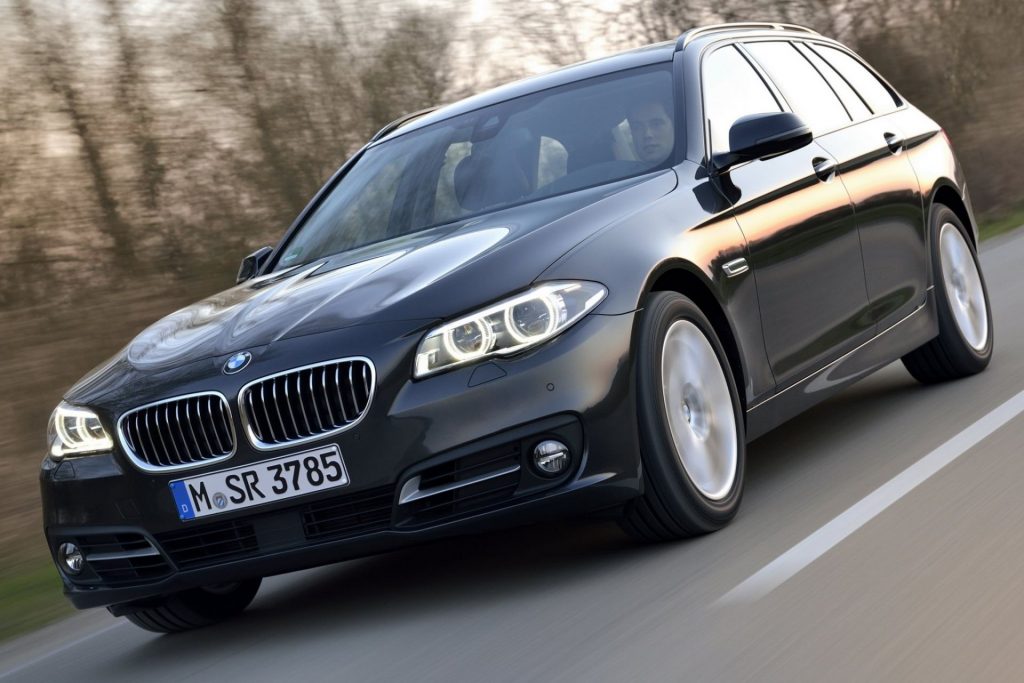
Fog lights
They are present in the base BMW 5 F11 cars. This compensates for the lack of steering headlights. With fog lights, the lighting angles are achieved at maximum comfortable levels. This contributes to optimal safety when roads are poorly lit.
Engines of BMW 5 f11
Any engines with 100,000 km do not show any signs of wear. There is no oil consumption. After three years with V8 engines, their expenses increase. Cars show better performance with turbochargers, indicating not too high temperatures. To prevent quick oil consumption, it needs to be changed after 7 — 10 thousand km.
The main drawbacks of the engines are the intense work of the cooling systems. When radiators get dirty, they wear out. After three years of use, attention should be paid to the levels of cooling fluids and the integrity of the radiators. In dense layouts, various sensors fail to work. High operating temperatures do not tolerate engine gaskets.
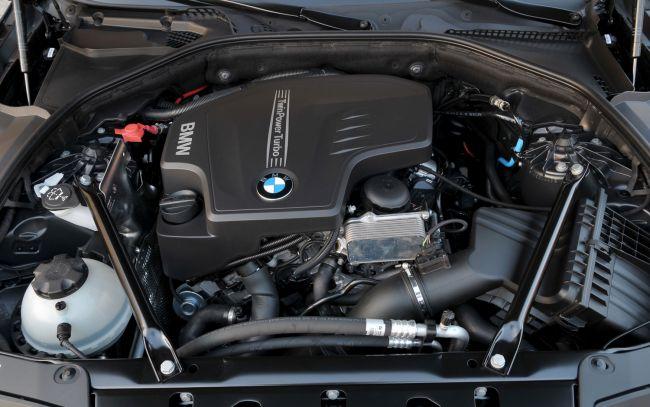
When driving in urban areas, periodic replacement of lubrication elements is necessary. When oil level sensors fail, the engines shut down. It is essential to monitor the oil and any knocking sounds.
In petrol cars with direct injections, frequent replacement of injectors is required. This happens right after the warranty periods. All engines are tested. The exceptions are the unreliable V8 N63. The most reliable are the Touring models with diesel «sixes».
Later production engines have no issues with timing belts. The 2014 engines work quietly and smoothly. Cars with six-cylinder engines have been replaced with four-cylinder petrol engines. They come with specific design solutions for the camshaft drive, where axes and piston pins may shift.
In these engines, oil pumps can be adjusted. They have aluminum cylinders. The four-cylinder engines have higher power, almost 350 hp, and torque.
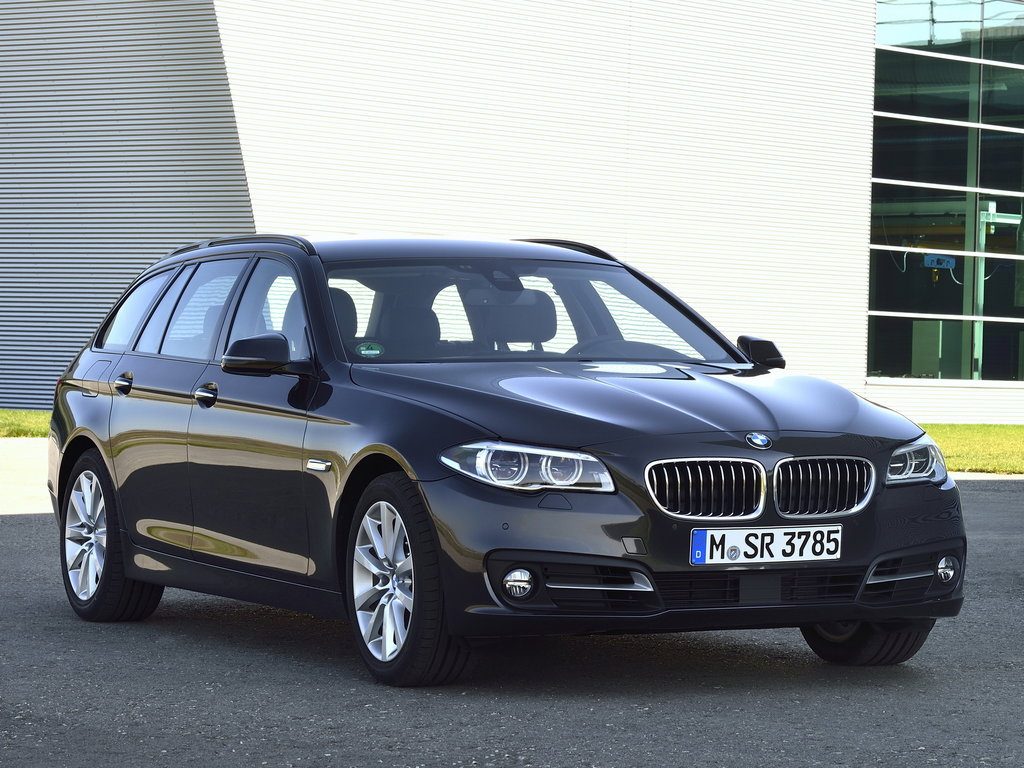
Engines differ in injection systems and compression ratios. Pistons have a lifespan of 250,000 km. Car owners praise the timing belts and oil pump drives. Low mileages do not create problems. The wear of components is uniform. Restoration requires 350,000 rubles.
Four-cylinder engines in petrol and diesel have lower prices. The most powerful and reliable ones are the N57.
Interiors
There have been no significant changes to the interiors of the BMW 5 F11. They feature a strict and concise style. Everything is centered around the driver's seats. Drivers have comfortable access to all controls.
- Multi-functional steering wheels with various positions.
- Comfortable driver seats.
- Instrument clusters made with the latest technologies, with comfortable lighting.
- Panels with 10-inch displays can be ordered.
The interiors of the cars look expensive. However, leather still wears out over time. According to car owners, this mainly happens with light nappa leather. Sometimes issues arise with locks, and mirrors can darken. The fastenings on the dashboards may loosen.
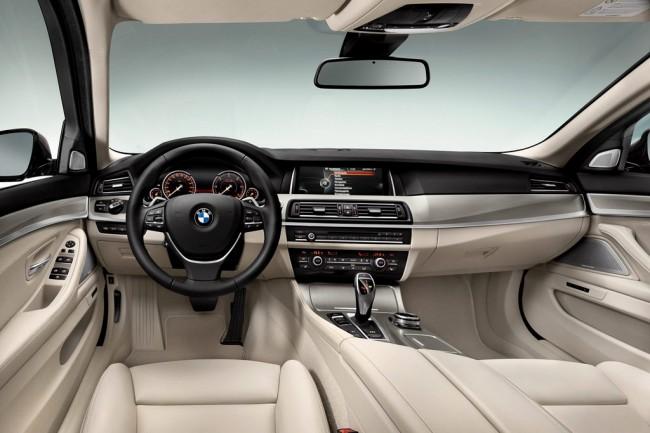
The main drawback in multimedia updates on NBT is that they often glitch.
Owners face issues where buttons become unresponsive for:
- opening the trunk;
- Start/Stop functions.
Recordings from flash drives may not play. Sometimes, there is wear and tear on the USB interface adapters. Problems may also arise in dual-zone climates with SE equipment.
Drivers may initially feel cramped in the cars, but they eventually get used to the iDrive systems. There is enough space for front passengers. However, the back seats may be a bit tight. The car is comfortable for 4 people. The spaces are not very comfortable due to large transmission tunnels in the cars.
Thanks to the extended wheelbase, legroom is comfortable. Seats can be adjusted. The wagons have 560 liters of trunk space, while sedans have 520 liters. Folding the seats can triple the volumes and allow for transporting bulky items.
Restyling of BMW 5 f11, pre-restylingThree-liter diesels are available in two trim levels.
- Base models with 258 hp, consuming 5.4 liters
- Luxury models with 381 hp, consuming 6.2 liters. Accelerating in 4.7 seconds.
Restyling of BMW 5 f11, pre-restylingElectronic Equipment of BMW 5 f11
The electronic equipment performs well.
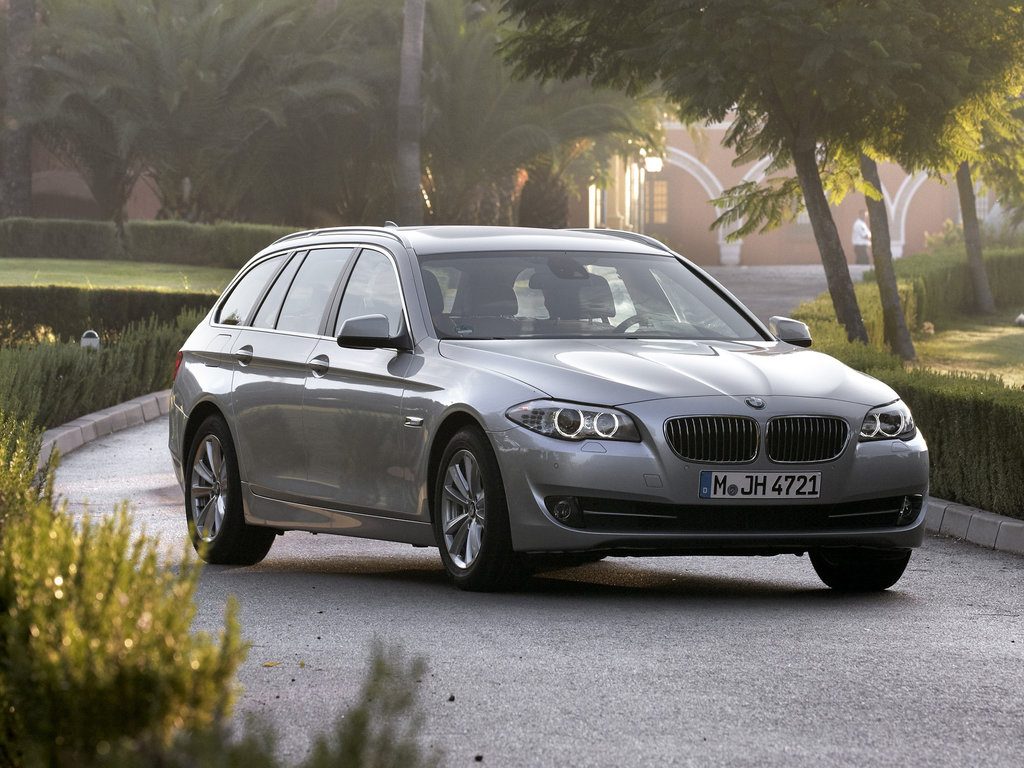
Owners use:
- BMW EfficientDynamics designation;
- lane-keeping assist systems;
- video projection screens;
- surround-view cameras;
- Auto Start-Stop;
- brake energy regeneration.
Professional navigation devices are known for their reliability. However, if malfunctions occur, a substantial sum will be required. Over time, electrical issues may arise in the cars.
Points to Consider
Brake systems have limited lifespans. Brake pads and discs wear out quickly.
Suspensions are unreliable. A couple of large potholes and their lifespan ends.
Important! Therefore, do not assume that these are off-road suspensions and always brake before significant obstacles. Or, after 50,000 km, the lower front arms and shock absorbers may need replacement. Although the latter may wear out even earlier.
The pneumatic equipment is reliable. The cars' steering wheels have electronic controls. Weak points concern the steering column shafts that become loose and cause knocking. Tie rod ends need to be replaced after 50,000 km, or even sooner on poor roads.
Mechanical gearboxes are reliable. Silent blocks wear out. Driveshaft damage occurs. All-wheel-drive cars have common issues. Front axle reducers wear out. Oil changes are necessary. If not done, bearings will produce unpleasant sounds after 100,000 km.
Engine gears are replaced separately from drives. The eight-speed Steptronic transmissions have sturdy designs, supporting up to 700 Nm of torque with adaptive gear shifts.
Trim Levels of BMW 5 f11
Cars with two-liter engines are available in four trim levels:
- Basic rear-wheel-drive models. With 184 hp, acceleration of 7.9 seconds. Equipped with active cruise control, airbags, ABS. Starting at 1,899,000 rubles.
- All-wheel-drive Business models with speed limit indicators. Engines similar to the next 2 trims. With 245 hp, consuming around 6.4 liters. Top speed of 250 km/h. Priced at 2,479,000 rubles. They feature speed limit indicators.
- Auto M SPORT. Priced at 2,616,000 rubles. They have air intake control mechanisms.
- Luxury editions priced at 2,954,000 rubles, featuring night vision displays.
Three-liter engines with 306 hp. Fuel consumption of 7.6 liters. Acceleration in 5.6 seconds. Top speed of 250 km/h.
Cars with 4.4 liters, generating 450 hp, consuming 9.2 liters. Accelerating in 4.4 seconds.
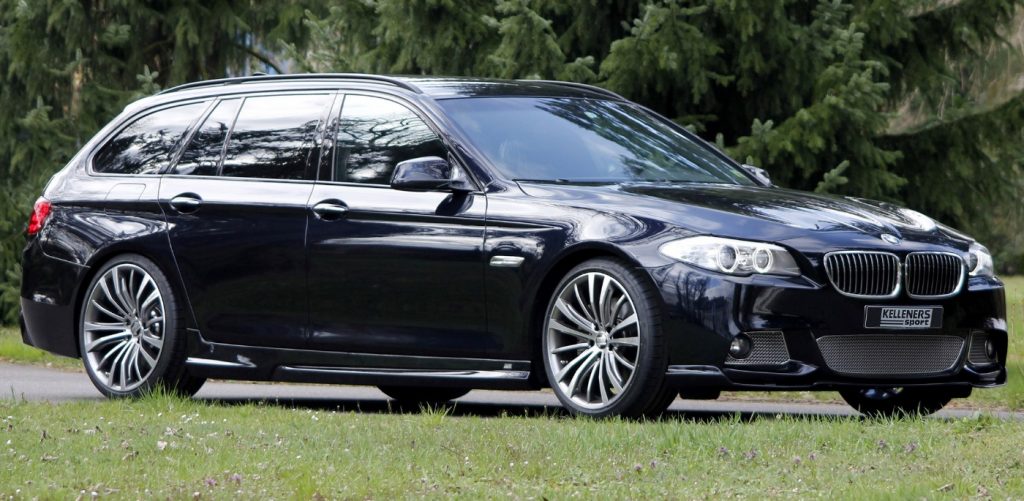
Two-liter diesels with 184 hp, consuming 4.5 liters. Top speed of 231 km/h in 7.9 seconds.
Three-liter diesels are available in two trim levels.
- Base models with 258 hp, consuming 5.4 liters
- Luxury models with 381 hp, consuming 6.2 liters. Accelerating in 4.7 seconds.
